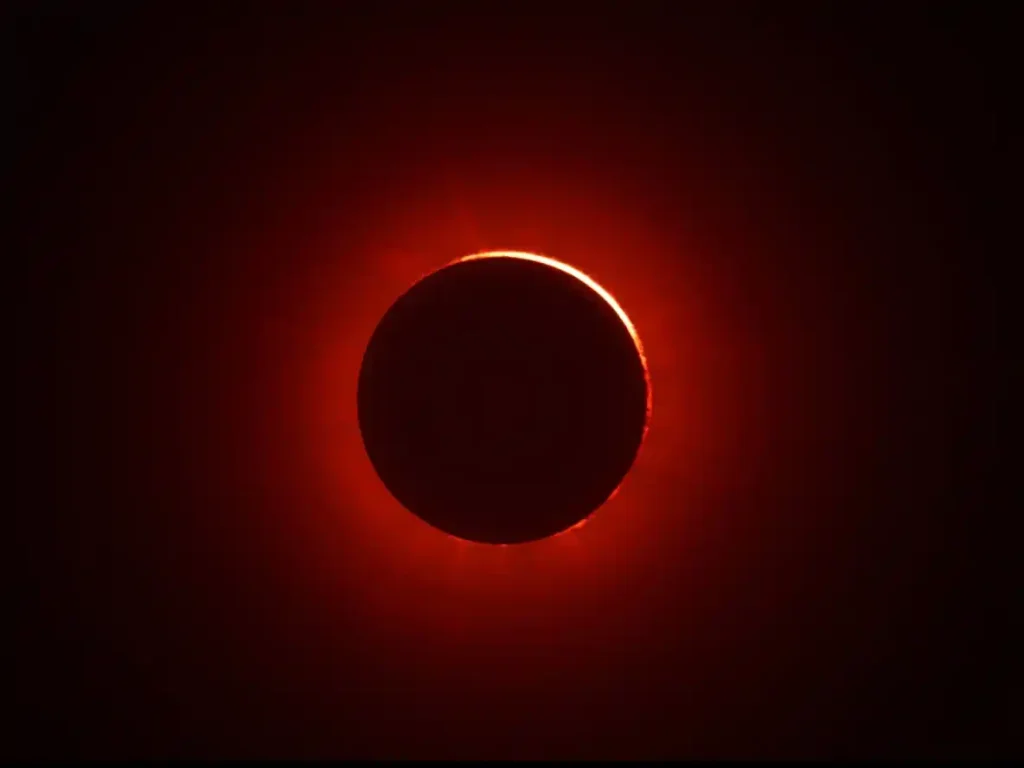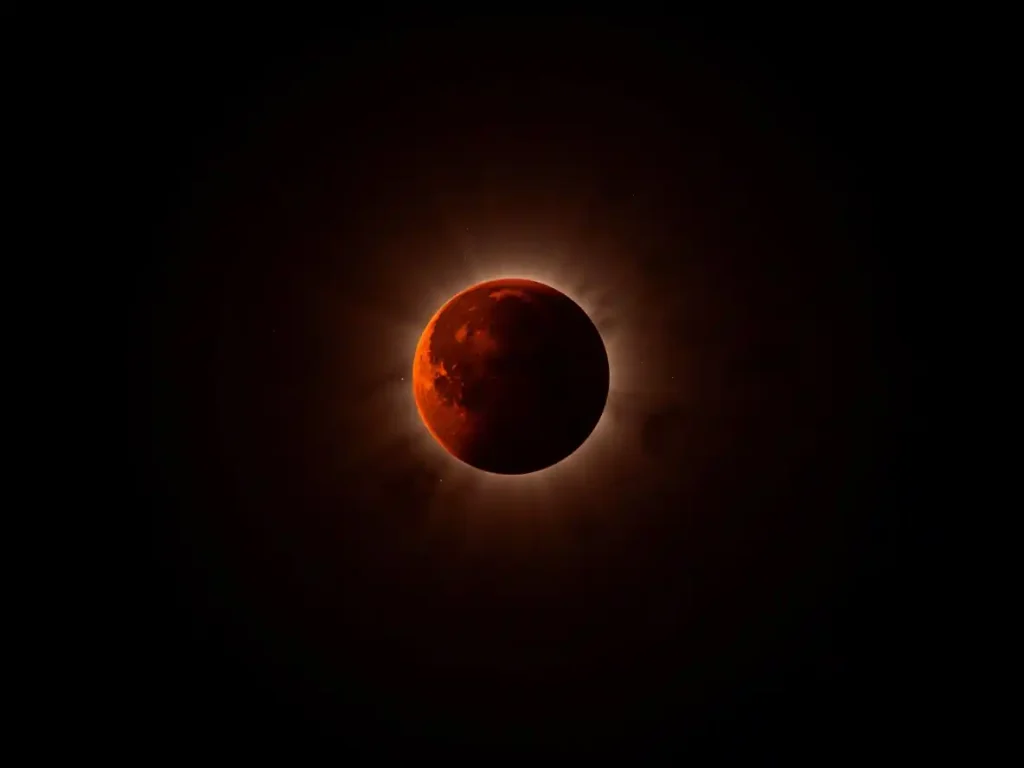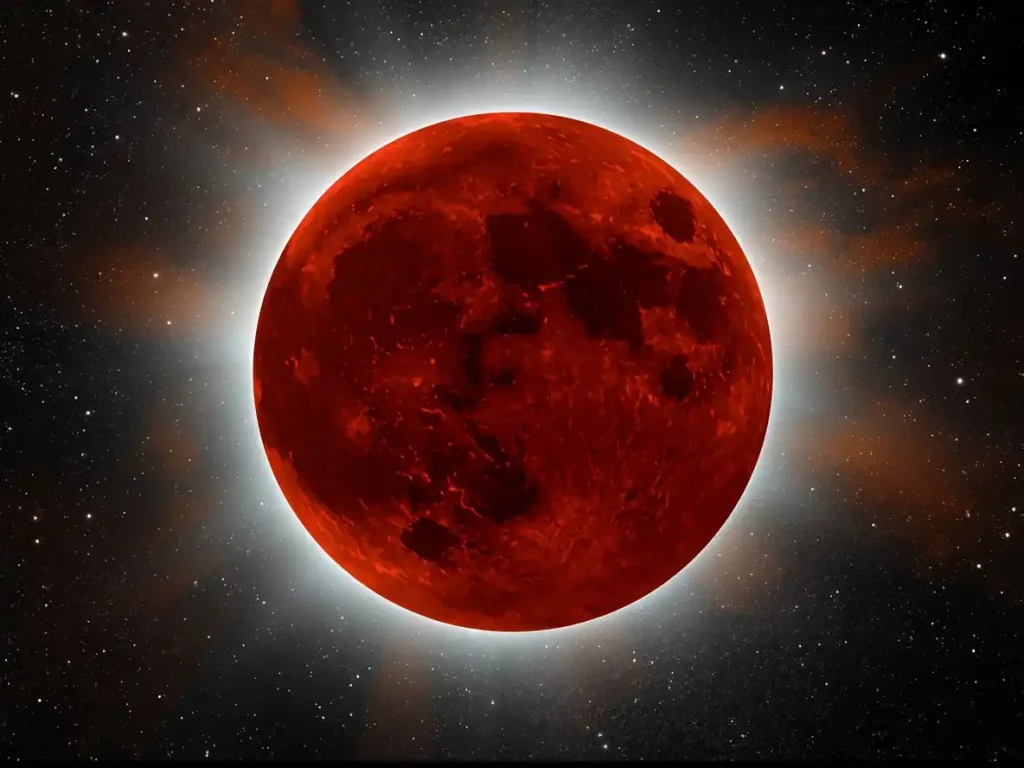This weekend, the heavens are staging a breathtaking performance. A total lunar eclipse will coincide with the full Corn Moon, transforming our celestial neighbour into a haunting, reddish orb known as a “Blood Moon.” While not visible from the Americas, this event promises to be a profound spectacle for millions across the globe. This isn’t just another astronomical event; it’s a powerful reminder of our place in the cosmos, a stunning visual phenomenon, and a rare opportunity to witness cosmic clockwork in action. Here’s your comprehensive guide to understanding and appreciating this extraordinary event.
Blood Moon: What Exactly Is Unfolding in the Sky?
On the evening of October 29, 2023, the Sun, Earth, and Moon will align in a perfect, or very nearly perfect, straight line. This celestial syzygy will cast the Earth’s shadow directly onto the surface of the full Moon. Unlike a solar eclipse, which is a brief and blinding event, a lunar eclipse is a gradual, serene, and safe-to-watch ballet of shadows. The event will begin at 11:28 a.m.
ET and conclude at 4:55 p.m. ET. The main event, known as totality—when the Moon is entirely engulfed in the Earth’s umbral shadow—will begin at 1:30 p.m. ET and last for a generous 1 hour and 23 minutes, offering ample time for observation. This specific alignment creates the conditions for the Moon to undergo its dramatic color change, making it a “Blood Moon” eclipse.
Blood Moon: The Science Behind the Crimson Glow: Why Red?
The most captivating aspect of a total lunar eclipse is the Moon’s transformation into a deep copper or blood red. This occurs not because the Moon is emitting light, but because of the way sunlight filters through our own planet’s atmosphere. As sunlight reaches Earth, it is scattered in all directions. Shorter wavelengths, like blue and violet, are scattered more easily (which is why our sky is blue), while longer wavelengths, like red and orange, pass through more readily.
During a lunar eclipse, this red light is bent, or refracted, around the edges of the Earth and projected onto the surface of the Moon. In essence, the Moon is illuminated by the combined light of every sunrise and sunset happening on Earth at that very moment. The specific hue—which can range from a bright orange to a deep, dark burgundy—depends on the amount of dust and cloud cover in Earth’s atmosphere at the time.

Blood Moon – Who Gets the Best Seat in the House? Visibility Explained
NASA has confirmed that the prime viewing locations for this eclipse will be Europe, Africa, Asia, and Australia. For observers in these regions, the entire eclipse will be visible from start to finish, weather permitting. Unfortunately, for those in North and South America, the eclipse will not be visible at all, as the event will occur during their daytime when the Moon is below the horizon.
This geographical lottery is a simple matter of the Earth’s rotation. Noah Petro, Chief of NASA’s Planetary Geology Lab, offers a reassuring perspective for those in the right place: “You can be in the wrong place, but as long as you are in the correct hemisphere, you are good.” This highlights the accessibility of lunar eclipses compared to their solar counterparts.
Blood Moon: Your Powerful Guide to Watching the Eclipse
The fantastic news for eclipse chasers is that lunar eclipses require no special equipment whatsoever. You can simply step outside and look up. However, a few simple tips can dramatically enhance your experience. First and foremost, seek out a location with minimal artificial light.
Light pollution is the enemy of astronomical observation and can wash out the subtle, beautiful colors of the eclipsed Moon. While your naked eye is perfectly sufficient, a pair of binoculars will provide a stunning close-up view of the lunar surface, allowing you to see how the shadow and subsequent red light play across its craters and maria (the dark “seas”). A small telescope will elevate the experience even further. As Sara Russell, a research scientist at London’s Natural History Museum, notes, while gear isn’t necessary, “binoculars or a telescope may elude to an added experience.”
Blood Moon: The Significance of the Corn Moon
Adding to the rarity of this event is its coincidence with the full Corn Moon. As stated in the Old Farmer’s Almanac, the September full moon is traditionally named the Corn Moon because it coincides with the time of harvesting corn. This name originates from Native American and colonial traditions, where each full moon of the year was given a name reflecting the seasons and natural world.
While the eclipse itself is the main event, the full moon will be exceptionally bright in the nights surrounding the peak, offering a spectacular sight for moon-gazers across the world, including those in the Americas who will miss the eclipse. The moon will appear full for about 48 hours around its peak, essentially making the entire weekend moon-filled.

A Cosmic Perspective: More Than Just a Pretty Sight
Beyond its sheer beauty, a lunar eclipse is a moment for reflection. It is a tangible demonstration of the mechanics of our solar system, a direct result of the orbital dance between the Earth and the Moon. As research scientist Sara Russell eloquently explains, the Moon is a witness to Earth’s deep history. “Of all astronomical bodies, the Moon is the most peculiar, because it was formed during the very dawn of Earth’s history.
The Earth and Moon have together withstood a great deal, and the evidence of it is freely observable when you gaze upwards and see the great number of craters on the Moon, which is a product of over 4.5 billion years of history.” Viewing an eclipse is a chance to connect with that immense history and the fundamental forces that govern our universe.
What’s Next on the Celestial Calendar?
If you miss this eclipse or are outside its visibility zone, there’s no need to despair. The cosmos has a full slate of events coming up. The next three full moons will be supermoons, appearing larger and brighter in the sky as the Moon reaches its closest point to Earth. Furthermore, two weeks after this lunar eclipse, on September 21, a partial solar eclipse will be visible from parts of Australia, the Atlantic, Pacific, and Antarctica.
The latter half of the year also brings a packed schedule of meteor showers, offering regular opportunities for sky-watchers. Key showers to mark on your calendar include the Orionids peaking on October 22-23, the prolific Geminids on December 13-14, and the Ursids rounding out the year on December 21-22. Each event offers a unique way to engage with the night sky and appreciate the dynamic nature of our universe.

Table of Contents
Reference Website:
https://edition.cnn.com/2025/09/06/science/lunar-eclipse-full-corn-moon
Our Related News Website:
Sports: Sport Flash
World News: The News Grid
Environment News: Eco Alert
Business News: Biz Trend Now
Daily News: Unbiased Daily
Realm News: Real Time Realm
Retrun to our Homepage